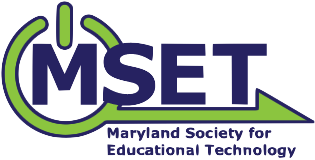By WILLIAM THOMPSON
|
When I started my teaching career I came in as the 5th grade reading teacher. After two years of teaching only reading, my school converted to having each elementary teacher teach all content areas. As a result, I had to teach math.
|
"...understanding 5th grade math is easy, teaching it is a different animal."
William Thompson
|
 A team of students share their work via FlipGrid in Mr. William Thompson’s 5th grade class at Choptank Elementary School.
A team of students share their work via FlipGrid in Mr. William Thompson’s 5th grade class at Choptank Elementary School.
I was excited for the opportunity because I originally wanted to teach math, but took the available job offered as a reading teacher. Once the year started, I realized that understanding 5th grade math is easy, teaching it is a different animal.
Thankfully after time collaborating with other teachers, my math coach, and hearing inspiring outside consultants offered within my district, teaching math started to become easier.
But, there was still something missing.
My instruction wasn't as engaging as it could be. During a graduate course, I learned about some different tools I was able to utilize during my math instruction. Harnessing the power of technology allowed be to take my math instruction to another level.
Twitter
I have never been a big Twitter fan, I always thought that this was a platform for people to be obnoxious. After I had an assignment that required me to follow a Twitter Chat, my mindset changed. I remember complaining to my girlfriend about having to do this assignment, and then once I started I was telling her how cool this was. Since I am still trying to get comfortable teaching math, I have been interested in checking in on upper elementary grade levels and strategies they share via Twitter.
Some people can abuse Twitter, but when following the right people it can be a wonderful tool for a teacher to learn and share with others. I have learned a bunch from other educators in ways to improve my craft through the Twitter world.
For example, creative ways to improve the student mobility in my classroom. One way is I plan to incorporate bike pedals under students’ desks. I have spoke with my administration about this and we are going to try and work on a grant so I can pilot this in my room.
Stations
Learning how to operate my math instruction through stations was one of the best moves I made in regards to math instruction. Being able learn about some technology tools helped take my instruction to another level. Tools like FlipGrid, Prodigy, and HyperDochave helped improve the level of engagement that my students have during math.
FlipGrid has helped improve my students understanding of concepts by being able to share their work and listen to their peers share theirs. Not only has it helped with their understanding of math concepts, but has also improved their speaking and listening skills.
Prodigy was something that I started to learn from collaborating with other teachers and the students have fallen in love with this game. I can align what I am teaching or have taught to students.
A HyperDoc is something that I am still familiarizing myself with better, but my early implementation has allowed students to show another level of engagement compared to my PowerPoint lessons.
Incorporating these different tools within stations during my lessons has challenged me to upgrade my instructional practices. Another component that has supported my instruction is the advice from math specialist Georgia Wensall; she stated have the students do the majority of the talking; students 80% teacher 20%.
Now, I find my students doing that -- a majority of the heavy lifting; they are doing the work at much higher levels than expected.
William Thompson, Choptank Elementary School Dorchester County, thompsonw@dcpsmd.org@MrWilliamThomp2

